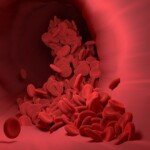The future is now: the rise of CNC robotics and automation factory booths
Walking into a modern cutting-edge factory, you may notice an amazing absence: few busy people. What are you Will be See interconnected machines buzzing accurately and working seamlessly. At the heart of this transformation is the powerful fusion of CNC robotics technology – computer numerical control (CNC) processing and industrial automation. This is not science fiction; it is the reality of rapid development of manufacturing, which is redefining how complex parts are made with unprecedented speed, accuracy and efficiency. Let’s explore this brave new world "The factory of the future" And understand the key role of advanced CNC machining (especially five-axis technology) plays a role in it.
From automation to autonomy: CNC robot revolution
Although CNC computers have automated specific machining tasks for decades, integrating them with sophisticated robotics takes functionality to another level. CNC robotics technology involves:
- Advanced CNC machine: Like a five-axis CNC machining center, it is able to perform complex and complex cutting in multiple planes at the same time.
- Intelligent robot: Collaborative robots (accessories) or industrial robot arms handle material loading/unloading, parts transfer between machines, and even simple tasks to complete.
- Centralized control system: Software platforms (MES, EMS, IoT) coordinate individual workflows, monitor performance, collect data and implement real-time adjustments.
- Sensor Integration: Vision systems, force sensors and probes provide real-time feedback for adaptive control, quality verification and predictive maintenance.
This integrated ecosystem creates a highly flexible, responsive and automated production line capable of handling diverse complex production with minimal human intervention – "Lights leave the factory."
Five-axis CNC machining: an essential engine for the factory in the future
In this robotic ecosystem, five-axis CNC machining is more than just components. This is usually a star performer, and can make the capability impossible with a traditional three-axis machine:
- Complex geometry mastery: Five-axis machining allows cutting tools to approach the workpiece from almost any direction in a single setup. This is common for engraved surfaces, complex contours, deep cavity and undercuts in aerospace components, medical implants, molds and high-performance automotive parts.
- Greatly reduced settings: If a complex part may require multiple fixtures and settings on a 3-axis machine (each introducing potential errors and alignment time), a five-axis machine usually does the entire job in one go. This will directly translate into faster throughput, reduced lead times and improved dimensional consistency. This is crucial for fast customization needs.
- Excellent finish and accuracy: Continuous, smooth tool paths achieve higher surface quality and tighter tolerances directly on the machine by simultaneously minimizing tool traces and vibrations. This usually reduces or even eliminates secondary completion costs.
- Extend tool life and efficiency: By maintaining optimal tool orientation and contacting the material, reducing vibration and achieving shorter tools (less prone to deflection), five-axis machining extends tool life and allows for higher cutting speeds and feed speeds.
These advantages allow five-axis CNC to process natural core technologies for high-precision, complex parts that are essential to future industries.
Building the future parts: The role of great characters in revolution
Embracing the future requires cooperation with advanced manufacturing capabilities. Gregthile, as a professional five-axis CNC machining manufacturer, position itself as the forefront of this evolution:
- State-of-the-art infrastructure: We operate a fleet of advanced five-axis CNC machining centers equipped with the latest controllers and high-speed spindles, specifically selected for their performance on demanding materials such as aerospace alloys, medical grade titanium, hardened steel and exotic plastics.
- Solve complex problems: Our deep expertise is not only in operating the machine, but also in Engineering Solutions. We have extensive experience in process planning, fixed design and tool path optimization, dedicated to complex metal parts to ensure manufacturability, efficiency and flawless results, even the most challenging geometry.
- End-to-end precision manufacturing: Besides original machining, Gremply provides seamless One-stop post-processing and completion service. From heat treatment and plating to complex polishing, anodizing or custom painting, we handle all of this under one roof to ensure quality control and eliminate supply chain delays.
- Material versatility and quick customization: Whether it is prototyping or extended production, we can handle it Most materials And specialize in research Custom precision machining. Our process is targeted Quick turnaroundallowing us to complete positive deadlines without sacrificing quality.
- Best Value Proposition: We combine advanced technology, deep expertise and simplified vertical integration to provide Precision parts at the best price. Investing in the five-axis function itself can reduce overall costs through efficiency improvements, which we pass on to our customers.
As factories move towards greater automation, it is tremendous to be able to provide consistently perfect partners’ value that is prepared to integrate into robotic systems. Greglight was designed as that partner.
The Future Factory Landscape: What CNC Robots offer
The integration of CNC robotics has produced tangible benefits:
- Unprecedented efficiency: 24/7 operating capability (luminescent manufacturing), minimum set time, faster cycle time, optimized material handling.
- Improve quality: Human error reduction, consistent repeatability measured in microns, real-time process checks, and the complexity of quality parts.
- Extreme flexibility: Quick conversion between different parts, the ability to handle complex geometric shapes on demand, and agile response to market demand.
- Reduce costs: Lower labor costs, lower waste rate, longer tool life, minimize rework.
- Data-driven improvements: Continuous data collection can predict maintenance, process optimization, product improvement and informed decision-making.
Conclusion: Successful cooperation with tomorrow
this "Future Factory" Powered by CNC robotics is not a distant concept. It was built today. With advanced five-axis CNC machining as the core – this technology achieves complex, high-precision parts that drive modern innovation. Companies embracing this evolution gain a huge competitive advantage through speed, quality and agility.
For designers and engineers, boundaries related to possible boundaries are crucial. Greatlight combines high-precision five-axis capabilities with comprehensive manufacturing expertise and end-to-end service to solve the most demanding metal component challenges. We quickly and effectively promote innovation by transforming complex designs into tangible, high-quality reality. Ready to build a future? Customize precision parts with five axes of power – Get quotes from Greatlight today at the best price!
FAQ: CNC robotics and five-axis machining
Q1: What exactly is it yes CNC robotics technology? Isn’t CNC already automated?
Answer: CNC automation refers to a single computer that follows programming instructions. CNC robotics technology involves Integration CNC machines, such as five-axis mills, come with other robotic systems. This could mean that the robot automatically loads/unloads parts, transfers workpieces between different machines, and even collaborates with CNC machines for complex multi-stage operations, all carefully planned by a central control system for real-life production line automation.
Question 2: Why is five-axis machining considered that the future is essential to future factories?
A: Future factories prioritize flexibility and complexity. Five-axis machining both offer both: it handles complex geometric shapes that are impossible on a simple machine Single Settingsgreatly reduce cycle time and improve accuracy. This agility is critical to the high mixing, small volume production, rapid prototyping, and manufacturing parts required by advanced robots and automation systems themselves.
Question 3: Does CNC robotics mean that factories will completely eliminate human work?
A: Although CNC robots automate repetitive, physically demanding and highly precise tasks, it creates a need for new skilled roles. Humans will pay more attention to the roles of system design, programming, maintenance, supervision, quality assurance, data analysis, and managing the overall workflow. The nature of manufacturing jobs will develop towards highly skilled positions.
Q4: Can Greatlight be processed with five-axis CNC for mass production, or is it just a prototype?
Answer: Absolute. While the five-axis performs well under complex one-off and prototypes (due to the least set-up), it is also high for medium to large quantities of complex parts. By reducing setup and machining time for each part, optimizing tool paths and integrating with automation, five-axis machining for production runs can be effectively scaled. Our advanced equipment and processes ensure consistency throughout the process.
Question 5: I think I think it’s too complicated. Can five-axis CNC machining really be done?
A: This is usually its design! Five-axis CNC is specifically designed to target highly complex geometric shapes – organic shapes, deep cavity, undercuts, complex curves and compounds that frustrate 3-axis machines. Send us your challenging design, which our engineering team will analyze to determine the best (usually the most cost-effective) five-axis machining strategy to successfully manufacture it.
Question 6: In addition to processing, what completion requirements can be built-in with good handles?
A: Ours One-stop post-processing service comprehensive. Common products include precision grinding, heat treatment (for hardness/pressure relief), various electroplating (nickel, chrome plating, zinc), anodizing (for aluminum-type II/III, color), passivation (for stainless steel), specialized polishing (mirror, vibration, vibration, rolling, rolling), custom paintings and Laser drawings, as well as engraved or marked or marked. After processing, we seamlessly coordinate these steps.
Question 7: How does Greatmight ensure speed and quality?
Answer: Speed comes from our core technology: five-axis Reduce settingsWe utilize optimized CAD/CAM programming, have a modern high-speed machining center, and maintain effective workflow management. Quality assurance is through precise machines, quality inspection in the process, strict final inspection protocols using advanced measurement equipment (CMM, optical comparator) and the embedding of ISOs that are supported by years of expertise in conformity with quality mindsets. Five-axis efficiency directly contributes to consistent quality by reducing the source of errors for multiple settings.

















